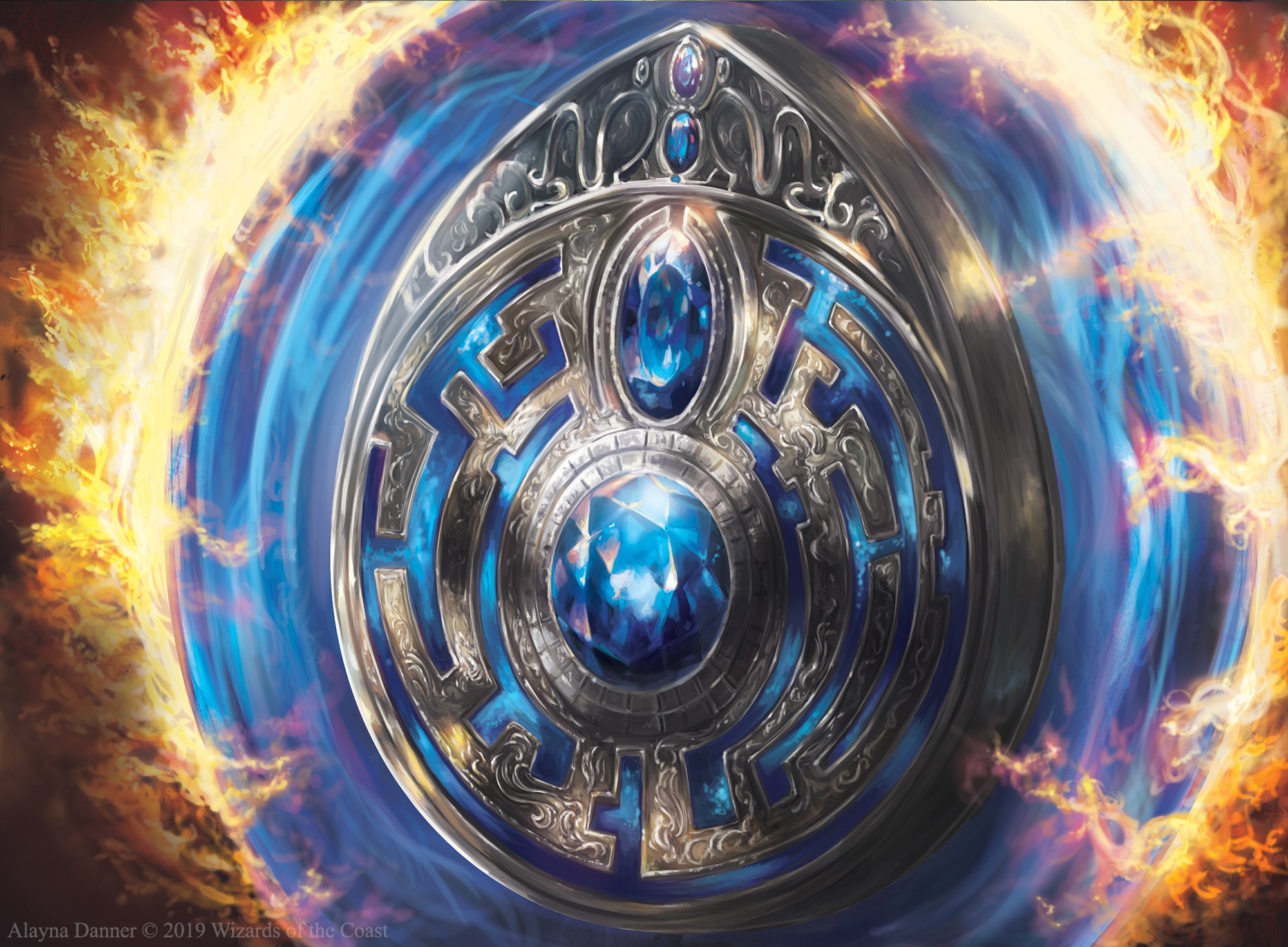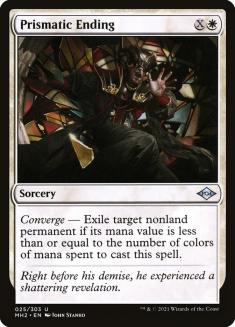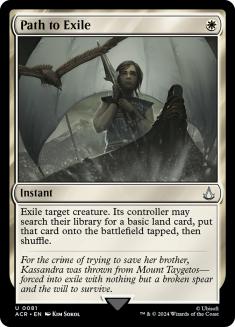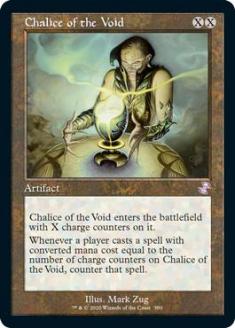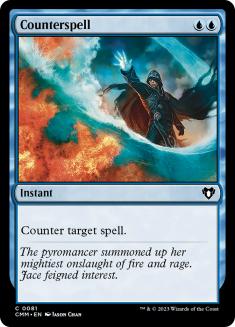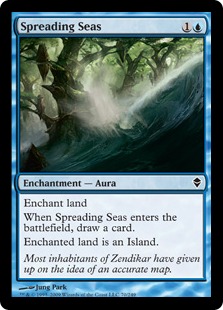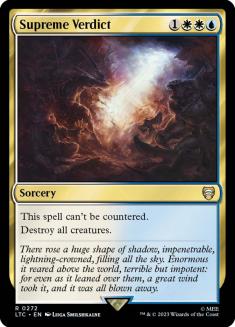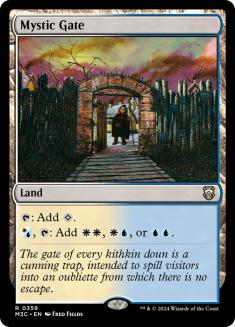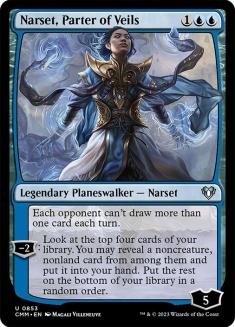Modern continues to surprise me. About two weeks ago, Guillaume Wafo-Tapa went on an absolute tear in a pair of Magic Online tournaments with a classic “Wafo Control” build. It featured a hefty amount of Shark Typhoon and a lot of Fact or Fiction, which generally means it’s just Wafo being Wafo. If you’ve paid attention to the man’s career, you’d understand exactly what I’m talking about. Sometimes you see a deck he plays and just can’t fathom it being playable, let alone good.
Some people are just masters of their craft, and Wafo-Tapa is one of those legendary control players who likes what he likes and you don’t question it. If you want to change a card or three, you’ll probably have similar (but worse) results, but the core of the deck is usually something to talk about. In this instance, the core of the deck is excellent, but the surrounding cast just needs a little bit of work.
After piloting a tweaked version for the first time on VS Live! I fell in love with it. It surely affected my opinion after beating Ross Merriam in a clean 3-0 sweep, with Ross piloting three of the format’s top decks. Spending the day enveloped in Magic, talking about Magic with fellow content creators, and physically playing games got the juices flowing again. This new version was born from Wafo-Tapa, but it was turned monstrous by someone else.
Behold, Wafo Control. Soak it in. This is about to get dicey.
The most important addition to this archetype is the profoundly useful Fire // Ice, a spell I’ve loved since my early days in Magic. I wanted for so long to have it alongside Isochron Scepter in Modern. Much to my chagrin, they changed the rules for mana values on split cards a few years ago, ruining my dreams outright. For a time, I forgot about Fire // Ice, but it came back to me in Modern Horizons 2.
It’s been ubiquitous in the cascade decks that play red. If a deck can play both halves of the card, it probably should be playing it. I’ve had it be good. I’ve seen it do some dirty things in spots you wouldn’t believe. The one thing I’ve never seen it do is “be bad,” which is impressive for a removal spell in this day and age. Even Lightning Bolt can lose its luster on occasion, but Fire // Ice remains.
Removal spells tend to have diminishing returns in some matchups. If you draw too many removal spells, you might not have the capability to apply sufficient pressure or answer noncreature threats. If you draw too little removal against a creature-based opponent, they can run you over without much trouble. You can usually tell when a removal spell will make it big in Modern because that removal spell does something a little extra. Bonecrusher Giant is efficient and offers a threat alongside said removal. Lightning Bolt and other burn spells act as a way to deplete your opponent’s life total even if they don’t have creatures to target. Fire // Ice is a different animal entirely, becoming a brand-new card in a given matchup.
I was always curious why Fire wasn’t printed into a card on its own. We got close once with Arc Trail and Forked Bolt, but mostly I just wanted something at instant speed that did two damage split however I wanted. Ice was similarly okay to print by another name. Tapping down a permanent isn’t exactly broken, and cycling on top of that is okay but nothing scary. When you combine the two together, two Izzet spells that are maybe a little too good on their own to print as-is, you get one incredible tool that’s come back at long last, and shines brighter in Jeskai Control than most other archteypes.
In my last few matches, I used Fire to kill Ragavan, Nimble Pilferer and Dragon’s Rage Channeler; used Ice to tap a land so my opponent couldn’t cast Counterspell on my Teferi, Time Raveler; and used Ice to tap my opponent’s Tarmogoyf when Teferi, Hero of Dominaria gave me two extra mana after drawing a card. Fire // Ice has felt like the addition the deck needed, both in terms of extra interaction and unpredictability. Control decks are always looking for cheap interaction, and are doubly on the lookout for that interaction to be modal.
The original version of this deck was essentially Azorius with a red splash for Sunburst on Prismatic Ending and Engineered Explosives. Since it already played Steam Vents and Raugrin Triome, it made a lot of sense to add one or two more red sources for the freebie splash of Fire on Fire // Ice. On original viewing, I was looking for something else in that early slot that dodged your own Chalice of the Void. Prismatic Ending was obviously excellent, but what other removal spells cost two mana and are worth their salt? Fire // Ice fits the bill and even covers the very generous tip.
After playing some matches with the deck, I quickly found myself losing in a lot of games to an opposing Ragavan on the first turn. Without the barrage of cheap removal like traditional Jeskai Control, those pesky one-drop creatures can do some serious damage before your removal spells get online. Similarly, if they’re playing the Izzet version, you can get beaten on the ground before you resolve a spell. Solitude can help solve many of those problems. The only downside is that you don’t actually have that many white cards in your deck, so your pitch card is usually a premium spell.
When playing this deck, I often found myself flooded on raw cards and needing specific types of interaction or time to catch up. Teferi, Time Raveler and Archmage’s Charm ensure a steady stream of cards, so having spells that are free or cheap ensures your life total stays nice and high. I recommend adding one more copy.
I have always hated Path to Exile. Why would I enjoy giving my opponent a land in any format, let alone one that featured lands with mana sinks like Raging Ravine and Castle Locthwain? To the surprise of absolutely no one, I’m a big fan of Prismatic Ending specifically because I don’t have to play Path to Exile anymore. In addition to dropping one of the worst cheap removal spells of all time, we get a virtual one-mana removal spell that’s so much more than that.
Prismatic Ending deals with Wrenn and Six and other cheap planeswalkers. It answers large creatures like Tarmogoyf without trouble. It only really struggles against the higher-mana-value creatures like Murktide Regent, but offers versatility in targets in exchange. On top of being a broad answer, the converge effect helps us play around our own powerful lock piece: Chalice of the Void.
Chalice of the Void has started to see a lot more play as of late, specifically because of how it interacts with cascade decks. Chalice of the Void for X=0 stops Crashing Footfalls and Living End. Meanwhile, a Chalice of the Void on X=1 stops most of the Ragavan decks in their tracks. If we can play a card that stops both of those things and has little to no effect on us, why wouldn’t we?
Chalice of the Void has a nasty way of making Teferi, Time Raveler unstoppable. Bouncing an opposing creature that then ends up locked under Chalice of the Void is brutal. Casting an early Chalice of the Void ensures the pressure doesn’t keep mounting, and your follow-up of Supreme Verdict or other removal stops the bleeding.
Older versions of this archetype, specifically those built by aspiringspike, played the full four copies of Chalice of the Void. We’ve scaled back a bit here, as too much of one effect is often wasted in a control deck. Building a reactive strategy requires finesse and versatility among your reactive suite. If you want to play some lock pieces or hate cards in the maindeck, you can, but drawing multiple copies is often worthless. We don’t have any way to filter dead cards and don’t want to stumble from drawing too many situational or redundant effects. Those lock pieces or hate cards are often played as a singleton because of this. High variance/high reward spells are often played as singletons in control decks that can play longer games. Those cards, like Rest in Peace or Chalice of the Void, are used to solve problems that don’t have easy solutions.
Rest in Peace, even as a singleton, can be a combo of sorts alongside Supreme Verdict to ensure opposing creatures don’t return from the grave. It can shut down Tarmogoyf and stifle Dragon’s Rage Channeler. It can keep Murktide Regent from being a useful threat, or even decimate a graveyard-based strategy. While one copy isn’t much to write home about in the maindeck, games go long enough where you can find it when its needed, so long as you don’t need it immediately (think Dredge or Persist decks).
The one-two punch of Chalice of the Void and Rest in Peace is a nightmare for Dragon’s Rage Channeler and other decks using both the graveyard and cheap enablers. In my matches on VS Live! against Ross, I would regularly assemble this pair and his frustration was a great source of joy for me. As the control player in the matchup, your goal should be damage control in the early turns, always looking for a window to start resolving your planeswalkers with protection. On occasion, you’ll get to stick a Teferi, Time Raveler and actually have it live. In those instances, the game should be relatively easy if you get to untap with it active.
I wanted to take a moment and talk specifically about Counterspell. There are some decks or strategies that can go under or completely invalidate Counterspell. Don’t be afraid to sideboard it out. Counterspell is good because it’s a generic answer to any spell, but it doesn’t have the ability to affect the battlefield. If your opponent is playing a deck full of cheap creatures, it might be time to put the Counterspells into the sideboard and add in some more sweepers and creature removal.
I only bring this up because I find that people often keep “generically good cards” in their deck when those cards aren’t necessarily great in a given matchup. Counterspells are often weak against aggro, but Archmage’s Charm actually supersedes this due to how it aggressively punishes one-mana threats and can be turned into card advantage in grindy games. Counterspell is one-dimensional, even if it’s a newer addition to Modern (and quite good, to boot).
There’s strength in versatility, but sideboarded games are all about efficiency and answers specific problems. It’s about gaining access to specialized cards that make your life easier or completely shut down the opposing strategy. If you aren’t upgrading how your deck works in tandem with becoming more interactive, or perhaps more insulated from your opponent, then your sideboard probably isn’t very good. Some decks don’t have the option to sideboard heavily. In the case of Jeskai Control, we have all the capability in the world to transform our deck in positive ways. Build as such.
Speaking of sideboard cards starting to see maindeck play, Spreading Seas has settled here because counterspells are quite weak against Urza’s Saga. Having a two-mana spell that cycles and kills Urza’s Saga outright is pretty sick, but it has utility in other matchups as well. Against Boros Burn (Lurrus), they don’t have many ways to use colorless mana, so a Spreading Seas can start to look a lot like Stone Rain that draws a card. It’s obviously great against Mono-Green Tron or other land-based archetypes, but doesn’t quite do the trick against lands like Valakut, the Molten Pinnacle.
Spreading Seas is good, but not great. It’s an answer that’s specific and yet versatile. Because of how powerful and prevalent Urza’s Saga is in Modern, you want to interact with lands. Spreading Seas just so happens to be the most palatable and least destructive to your own strategy. While something like Alpine Moon might be a bit more permanent in terms of answers to Urza’s Saga, it suffers from its vulnerability to Chalice of the Void and its hyper-specificity. It wouldn’t play well in the maindeck, where Spreading Seas is sufficient because it replaces itself.
Lastly, I wanted to discuss the raw strength of Supreme Verdict in this format. When Unholy Heat is everywhere, sweepers are probably good too. Tarmogoyf is also making a comeback, so we need actual factual removal to get the job done. It just so happens that Supreme Verdict deals a huge blow to Izzet, as one of their strengths is being able to put a clock on you while holding up Counterspell. This isn’t unlike the Delver decks of old, and Supreme Verdict was absolutely busted against those decks as well.
I would know. Been there, done that, got the steak knives.
Supreme Verdict can be a little awkward at times thanks to the double white casting cost. In a deck featuring Archmage’s Charm, the easiest way to make this work is to deal yourself a ton of damage via fetching Hallowed Fountain a lot. This can lead to trouble against aggro decks or opponents who just like to throw damage at your face (think 8-Rack). There is an alternative solution.
The second way is playing Mystic Gate, a land that most people forget exists. I didn’t think I’d like Mystic Gate too much, but it quickly grew on me. Most of the time it just taps for colorless. On occasion, it filters double white for Supreme Verdict. More importantly, with Plains it makes two blue mana. Having the ability to fetch Plains in your Archmage’s Charm deck without punishment is outrageous. That isn’t to say you should aggressively fetch Plains in the early turns, but you certainly can if you’ve already drawn Mystic Gate.
A Pinch of Salt
I’ve been regularly comparing deckbuilding to cooking. Both feature starting with an understanding of your core ingredients. You want to make sure you know how each operate individually, but you also want to know how they work together. If you do everything right, you’ll get a meal that’s both delicious and rewarding.
Wafo-Tapa has made a monster, and MrCafouillette has already upgraded it significantly. In my quest to find the perfect version of whatever deck I’m working on each week, I’ve taken the liberty to make some changes that I think could help us improve moving forward. As always, these are a work in progress, and today’s changes are rather minor. I love the current build, but I think a few holes need filling and the sideboard could use a little love.
As I said, minor changes. We’re looking to add a few patches to cover up our weak points, but overall I’m really digging the look and feel.
Narset is a fine addition to the sideboard, acting as a card advantage engine that completely shuts down your opponent’s draw spells in a control mirror. With this deck doing well over the last two weekends, I expect it to pick up in popularity, so I’d like to tech a little for it.
Going a little harder on Mystical Dispute could help resolve your more important cards in the mirror, but there are plenty of blue decks where Mystical Dispute is fine-to-good. You specifically want Mystical Dispute to win counterspell battles in the early turns. Without a cheap piece of interaction, you can get scammed by an opponent doing the same type of thing. Them resolving a Teferi, Time Raveler or similar is devastating, and it usually comes on the back of some combination of cards that involves Mystical Dispute.
I’m a big fan of Wear // Tear because of how cheaply it can kill Urza’s Saga, but also I just thought we needed more actual Disenchant type effects. Wear // Tear is versatile, and the split card aspect allows us to cast it even if we don’t have red mana. In a deck that’s lightly splashing a third color, split cards give you versatility but also ease of casting. Too many times I’ve watched friend and foe alike fall defeated to the ground with a hand full of cards. If you can’t cast your spells, you’re going to lose. It’s as simple as that.
Wear // Tear as a fuse is also pretty sick against some builds of Urza’s Saga, giving you a way to kill their best artifact while simultaneously dealing with their Urza’s Saga. It’s a powerful card that’s easy to cast and efficiently costed. I think more decks should be playing Wear // Tear if only because of how absurd it can be against Urza’s Saga opponents.
Modern continues to impress both in gameplay and deck construction. This Wafo Control deck is just another cog in the Modern engine, serving as neat little counter to some of the format’s more popular decks. The games against it can be awkward at times, as Chalice of the Void and Rest in Peace are designed to limit the functionality of your opponent’s cards. However, if you’re ahead as the control player, there are fewer better feelings in Magic than resolving a Fact or Fiction when you’re not under pressure.
Fire // Ice and Prismatic Ending offer control a removal suite that is versatile and unaffected by Chalice of the Void. If that interests you, I highly recommend picking this deck up and taking it for a spin.

